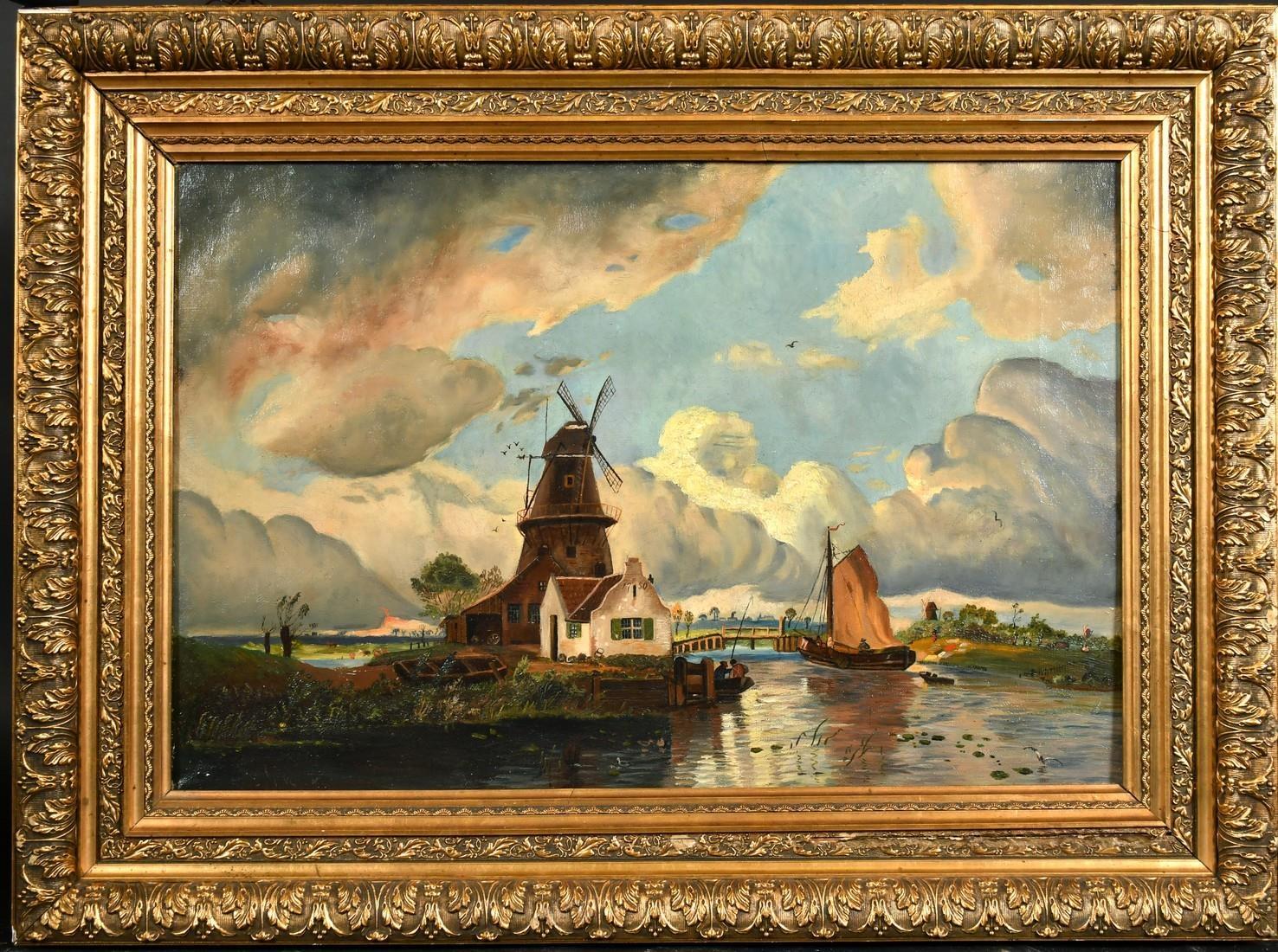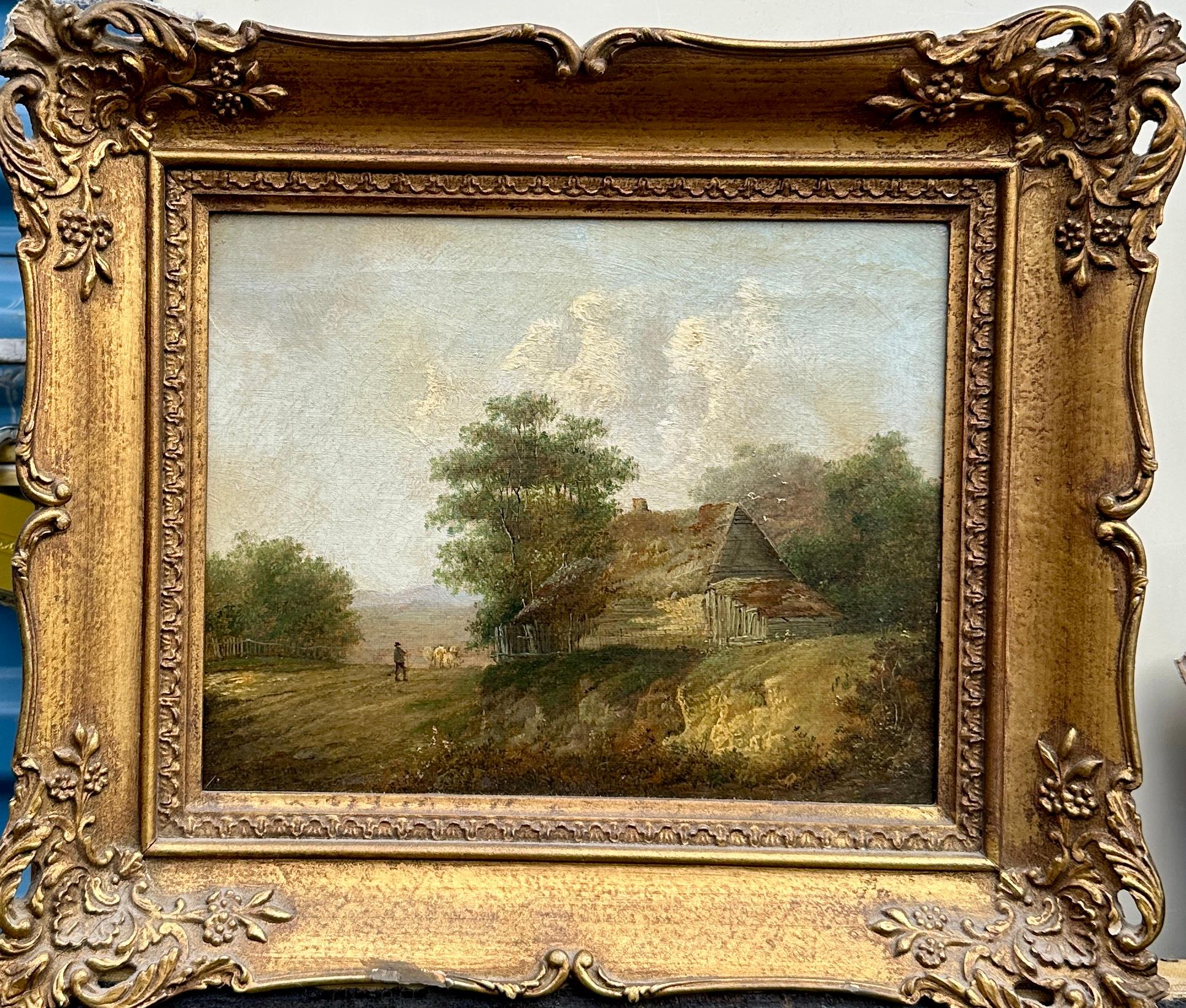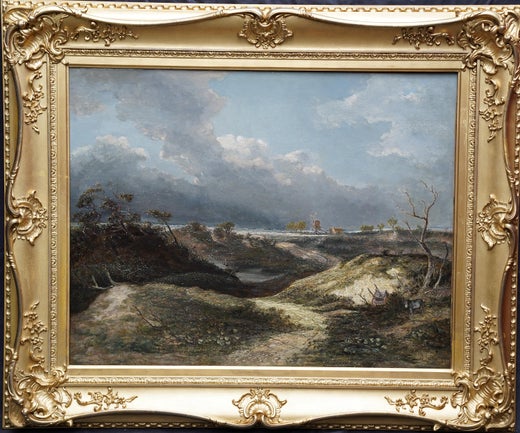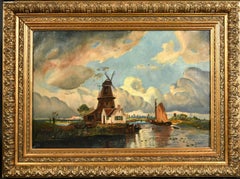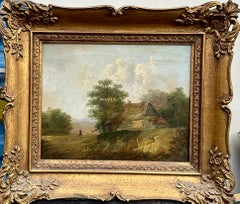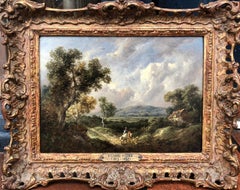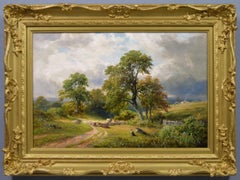Frederick Waters WattsLandscape with Windmill - British 19th century art Counstablesque oil paintingCirca 1840
Circa 1840
About the Item
- Creator:Frederick Waters Watts (1800 - 1862, British)
- Creation Year:Circa 1840
- Dimensions:Height: 35 in (88.9 cm)Width: 43 in (109.22 cm)Depth: 2 in (5.08 cm)
- Medium:
- Period:
- Condition:
- Gallery Location:Hagley, GB
- Reference Number:1stDibs: LU853113078312
Frederick Waters Watts
Frederick Waters Watts is also known as Frederick William Watts. Early years have always been something of a mystery. It is thought that he was born in Bath on 7th October 1800 and baptized the following year in St. Albans as William Watts. It is most probable he enrolled in the RA Schools in 1817 as William Watts, subsequently changing his name to Frederick William Watts to avoid confusion with the landscape painter, William Watts.
Watts was awarded silver medals at the RA School (1819–1821) and exhibited at the London Royal Academy from 1821 until 1862. He also exhibited at the British Institution, Suffolk Street Galleries and at the New Watercolour Society. Watts lived in Hampstead from 1821, where John Constable also lived, and, some 25 years older, was to have a marked influence on Watts’s style. Although it is not known that they ever met, Watts would undoubtedly have been familiar with his work and Hampstead was a relatively small town.
Watts painted landscapes throughout England and Wales, visiting north and south Wales, Derbyshire, Devon, Isle of Wight, Sussex and, of course, Suffolk and Essex. He painted many views around what is now north London and Middlesex and views on the Thames. Watts was highly successful in his portrayal of the English landscape and widely collected in his lifetime and throughout the 20th century in Britain, Europe and North America. His work can be found in London, Victoria and Albert Museum and The Tate.
- ShippingRetrieving quote...Shipping from: Hagley, United Kingdom
- Return Policy
More From This Seller
View All1840s Victorian Landscape Paintings
Oil
19th Century Victorian Landscape Paintings
Oil
19th Century Impressionist Landscape Paintings
Oil
1880s Victorian Landscape Paintings
Oil
Mid-19th Century Realist Landscape Paintings
Oil
Mid-18th Century Old Masters Landscape Paintings
Oil
You May Also Like
19th Century Victorian Landscape Paintings
Oil, Canvas
1870s Victorian Landscape Paintings
Canvas, Oil
Early 19th Century Landscape Paintings
Oil
19th Century Victorian Landscape Paintings
Canvas, Oil
19th Century Victorian Landscape Paintings
Canvas, Oil
Antique 1870s Victorian Paintings
Paint



